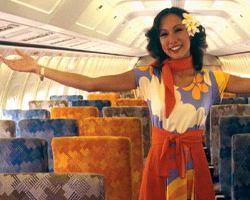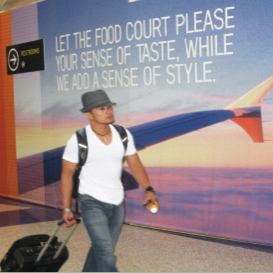The Travel Detective
Ideas To Speed Up Airline Boarding & Reduce Gate Congestion
How do you get everybody on the plane in a timely manner?
And how do you stop all the traffic jams and carry-on bags from clogging the gate?
Peter and The Wall Street Journal‘s “Middle Seat” columnist Scott McCartney discuss creative solutions to these age-old air travel problem.
Peter Greenberg: Airlines created a major problem when they started charging for checked bags. I was on a flight on Delta where everybody brought so many bags to the gate that Delta had to stop the boarding process and gate-check 53 bags, from 53 separate passengers. It delayed our boarding 40 minutes, all because people didn’t want to spend the money. It’s costing to us in terms of time. It’s costing the airlines in terms of fuel burn and delays.
Scott McCartney: It’s a huge problem for the industry and an equity problem for customers. The hundred people who didn’t gate-check bags now have a big incentive to put the inside of a dorm room in a duffel bag and carry it on board.
PG: Do you know about the Scottevest? It’s like a parka that has 22 separate pockets and compartments. You actually pack your bag in your jacket and you wear it. And you’re not violating any airline rule; you’re beating them at their own game. If you don’t mind how you look and how people are going to laugh at you, you don’t have to check your bags or pay for it. You just take your bag off and put it in the overhead compartment. Airlines haven’t figured out a way to charge for checked jackets yet.
Get more travel tricks in our Luggage & Packing section.
SM: There will be a breast-pocket baggage fee one day. American Airlines had a real problem with this because they were boarding their airplanes back to front, sort of the traditional way. So once you reach your seat in the back of the plane, about two people can stow their stuff. Everyone else is standing in line waiting. And people get nervous and they start taking the overhead bin space at the front of the airplane.

Aloha Airlines Stewardess showcases plentiful space in overhead compartments.
PG: I have to admit that would be me. I know I’m being a rude passenger. When I sit in the back of the plane, and I know it’s a full flight, I stow my bag in the front and sneak to the back. I don’t want to have to schlep that bag all the way to the back.
SM: It’s a problem the airlines have created. They were running computer simulations of different boarding scenarios and found that random boarding is best. Something like Southwest Airlines’ grab any seat you can. American now randomly assigns boarding groups to non-elite fliers. They found that by spreading people out throughout the cabin, more people can get to their seats at the same time. There’s less anxiety about getting overhead bin space. They’ve knocked an average of 3 or 4 minutes off their boarding time. And reduced the number of gate-checked bags by 20 percent. It’s better for the airlines, better for the passengers.
PG: I have a solution based on my experience in Lagos, Nigeria. The local airline had overbooked their flight by 55 people, who had all showed up for the flight. A riot was about to break out. An army colonel fired his weapon into the air and then ordered everybody off the plane. He then said, “When I fire my gun, you’re going to run around the plane once and whoever boards the plane first gets a seat.” You know what, it solved the problem. I never saw people move so fast in my life.
SM: That could work. I’d love to see it at LaGuardia.
More from Scott McCartney: WSJ’s Scott McCartney on Travel in 2011
 PG: When somebody mentions to me “random boarding” that sounds like a Fellini movie. I think the boarding group process is going to create anxiety for travelers. American is now charging a fee for early boarding. If you don’t have elite status and you’re worried about getting randomly stuck in the last group, are you going to go ahead and pay $10 to ensure that you get in group one? I think more and more people are going to feel pressure to pay the fee.
PG: When somebody mentions to me “random boarding” that sounds like a Fellini movie. I think the boarding group process is going to create anxiety for travelers. American is now charging a fee for early boarding. If you don’t have elite status and you’re worried about getting randomly stuck in the last group, are you going to go ahead and pay $10 to ensure that you get in group one? I think more and more people are going to feel pressure to pay the fee.
There’s another thing that happens. Many year ago, there was an small airline that came up with a brilliant idea. They put a moving cart in the gate area, where you could hang your garment bag and put on your carry-on bags. And the cart actually fit into a roll-in closet right behind the first-class entrance of the plane. So when they then boarded the flight there was no traffic jam. Airlines didn’t want to do that because it gave up two seats they charge for revenue. But with high fuel prices and low on-time performance, I would think it would be an economically viable alternative these days.
SM: The cost of couple minutes of delay is astronomical. Eventually airlines find they can’t reliably fly the same schedule with the same number of airplanes. Removing two seats costs less than buying another airplane, so it certainly is economically viable.
By Peter Greenberg from Peter Greenberg Worldwide Radio.
Related links on PeterGreenberg.com:












